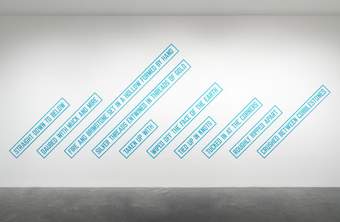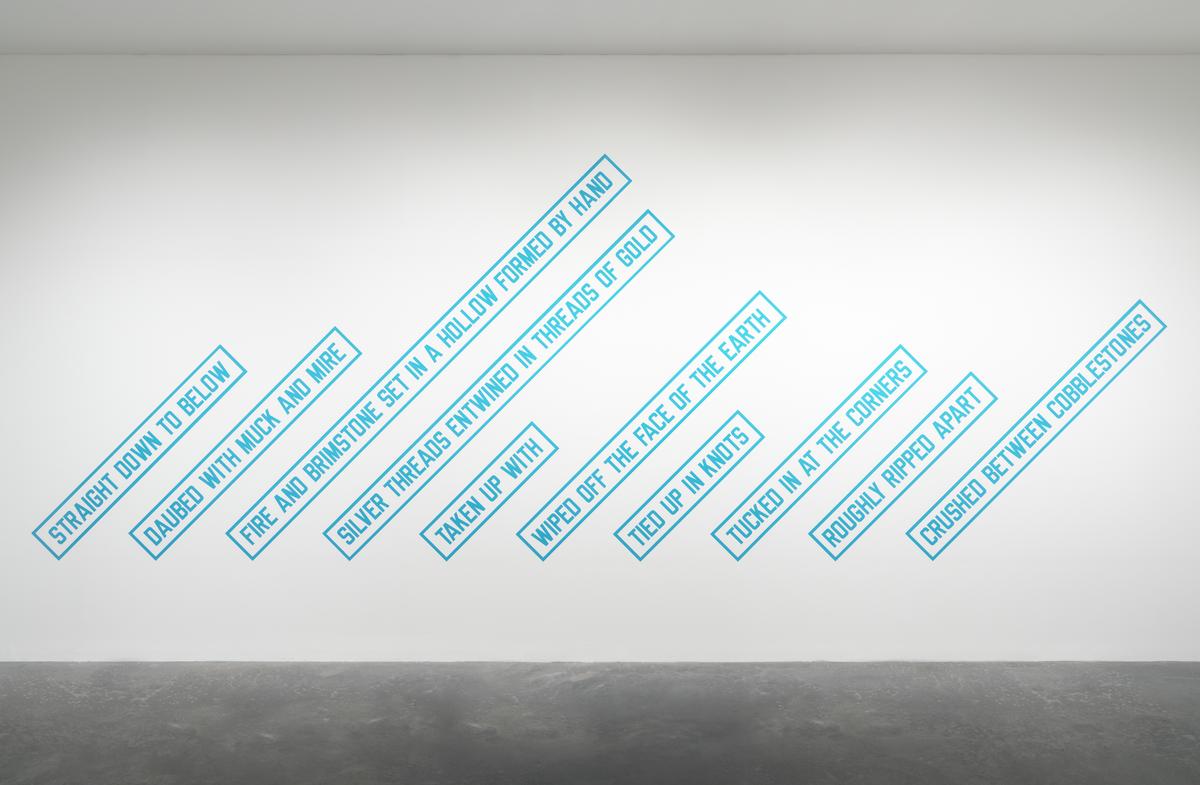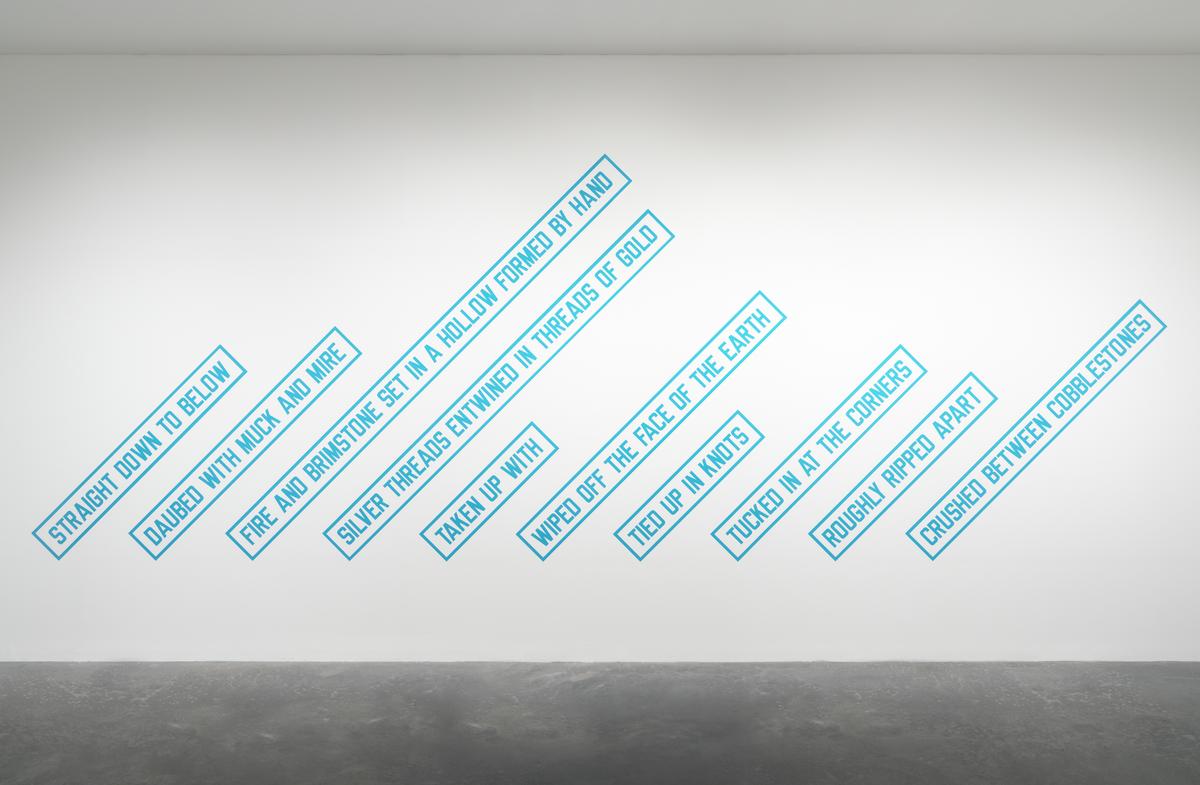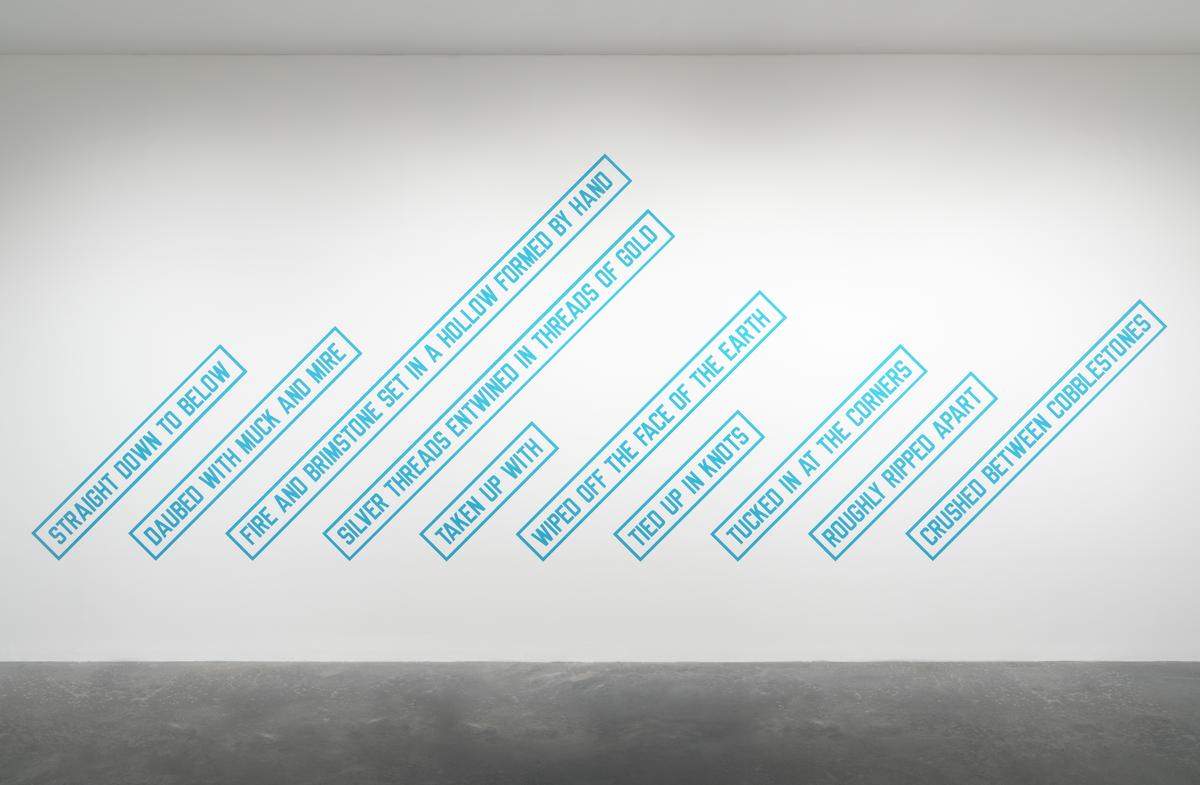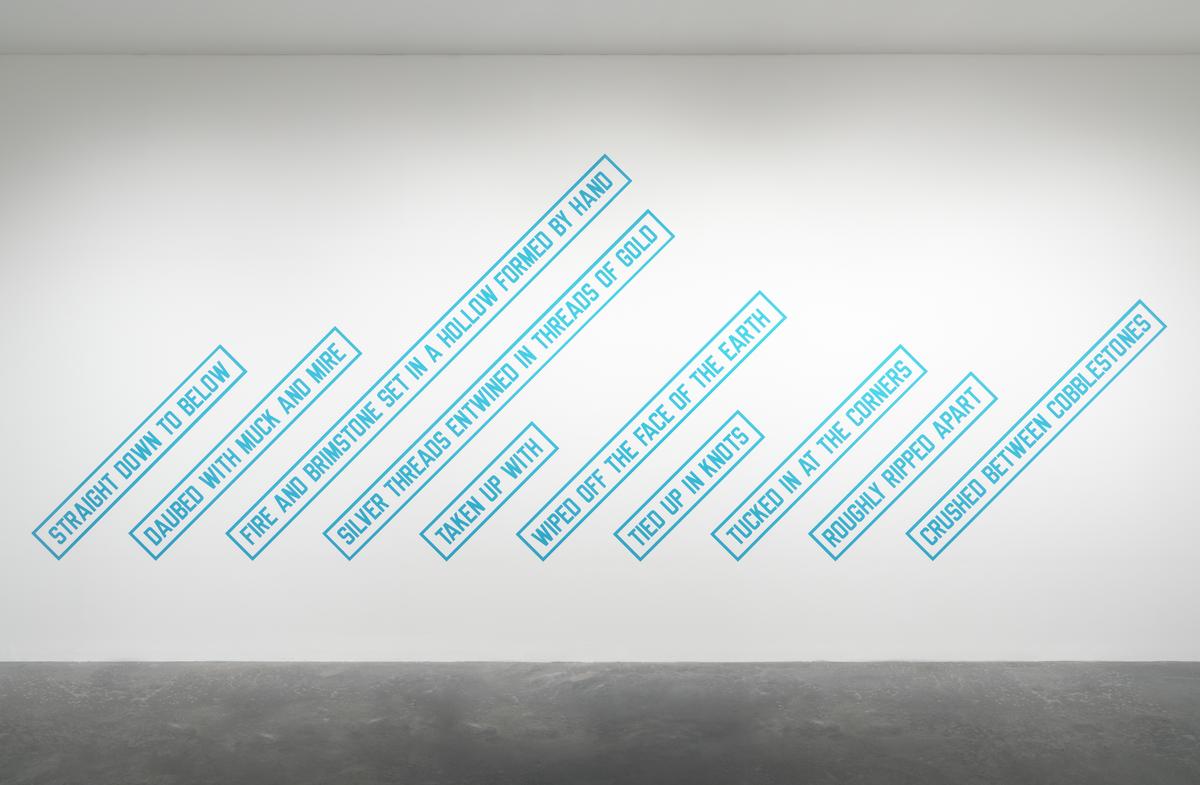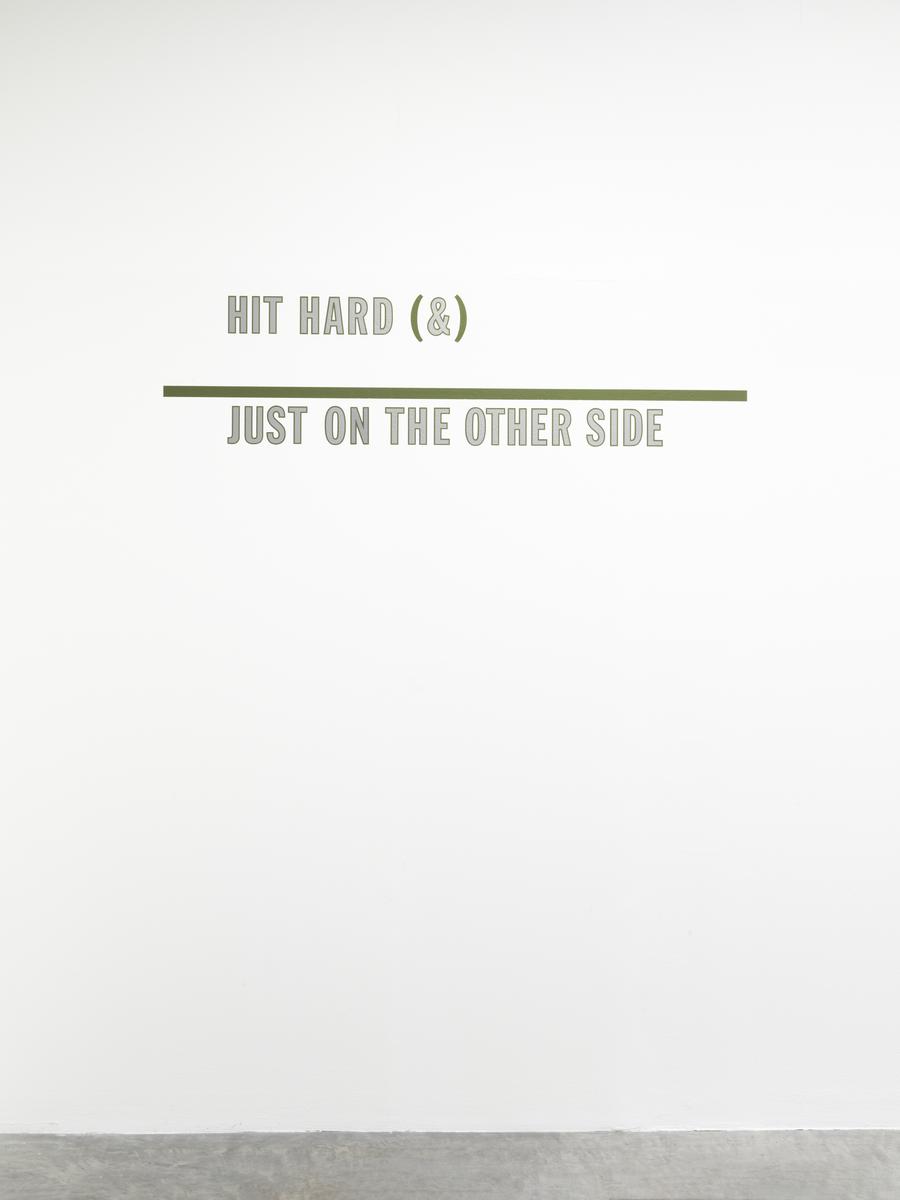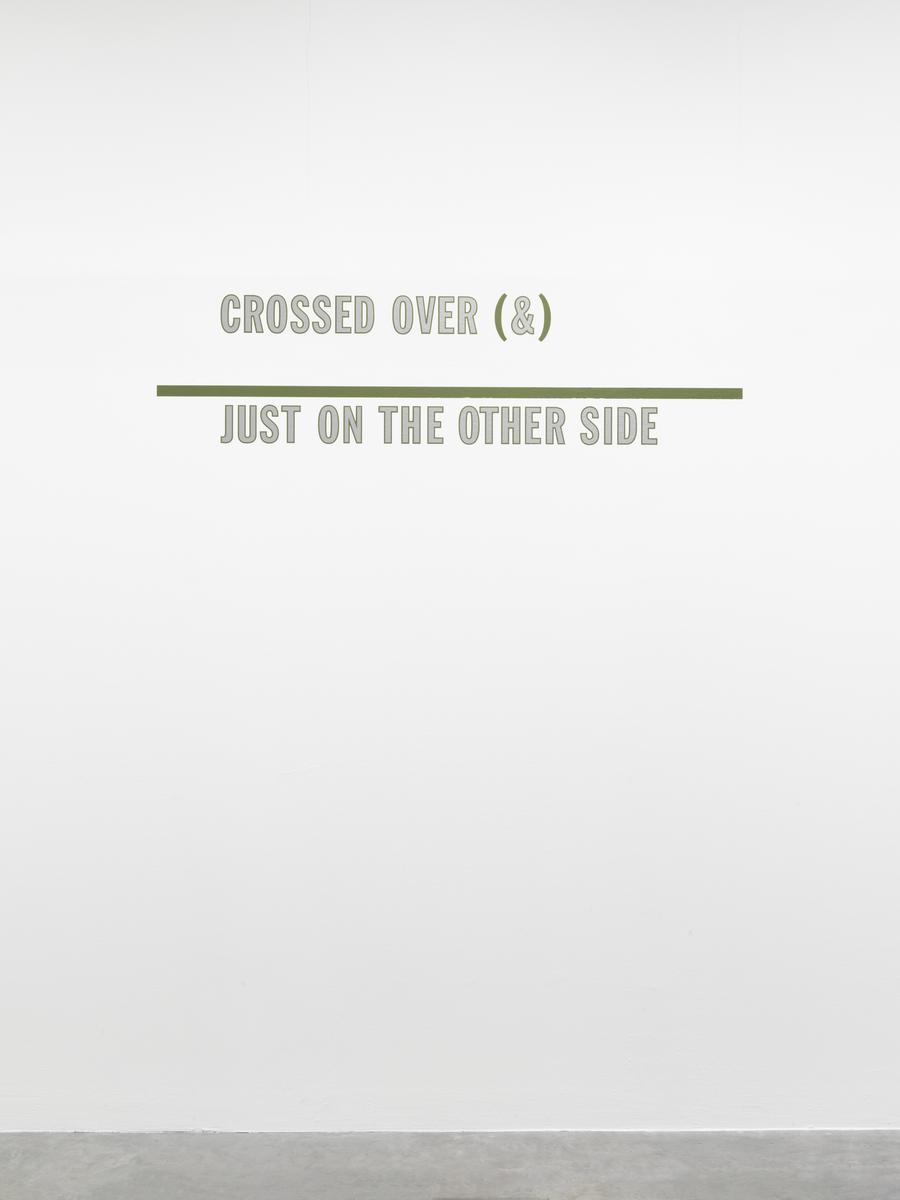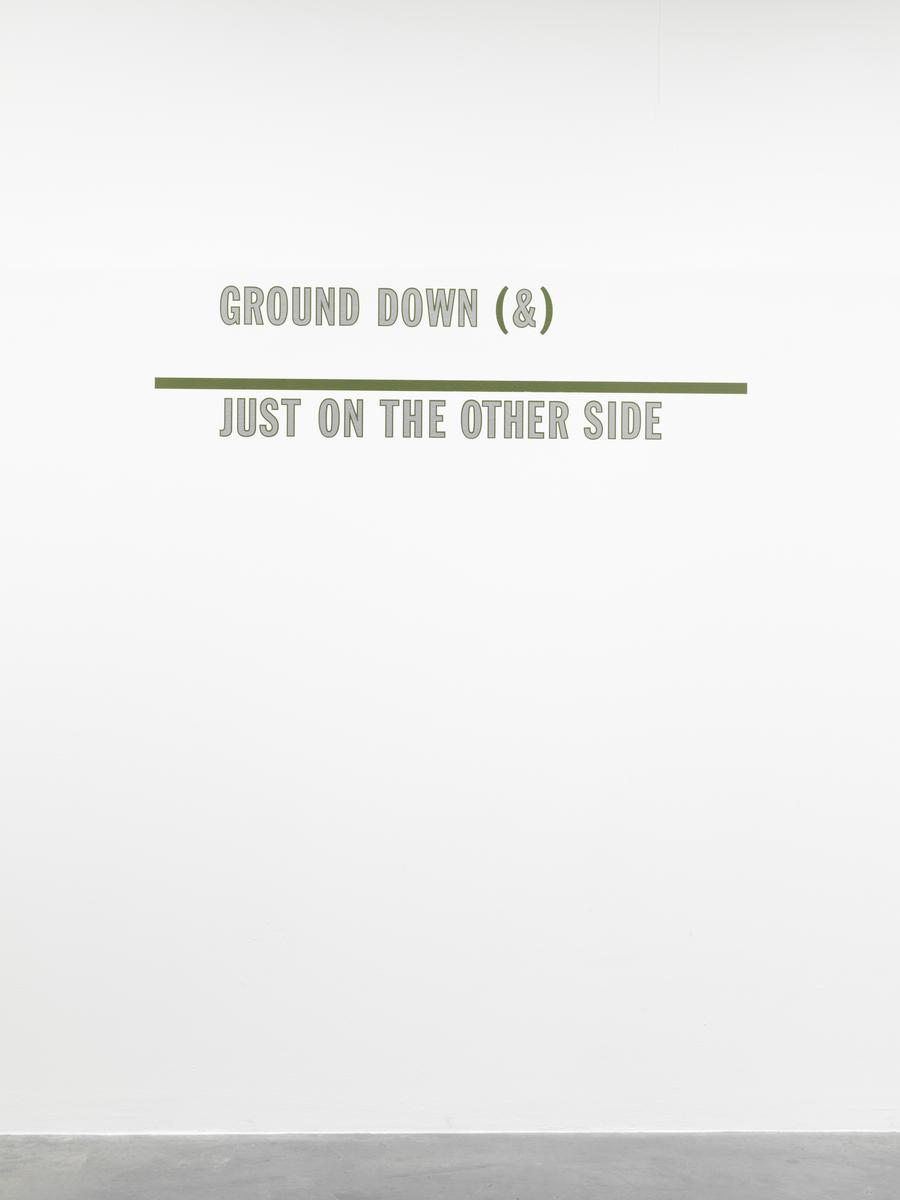The texts in these two rooms are activated as they are read
In the late 1960s, Lawrence Weiner contributed to the development of conceptual art. The movement proposed that ideas, or concepts, could be experienced as artworks even without a physical form. In 1969, Weiner summarised the principles underlying his art in what he called his ‘Declaration of Intent’:
1. THE ARTIST MAY CONSTRUCT THE WORK
2. THE WORK MAY BE FABRICATED
3. THE WORK NEED NOT BE BUILT
EACH BEING EQUAL AND CONSISTENT WITH THE INTENT
OF THE ARTIST THE DECISION AS TO CONDITION RESTS
WITH THE RECEIVER UPON THE OCCASION OF RECEIVERSHIP
Weiner viewed himself as a sculptor. He described the medium of his text-based pieces, or ‘statements’, as ‘language + the material referred to’. For Weiner, the active relationship between the work and the audience was key. He said, ‘I hope that the vast majority will read the words for their meaning and that they will place that meaning within the sculptural context of their [own] parameters.’ Through the act of reading and listening, Weiner’s ideas take form in the mind of the viewer. He invites the public to collaborate in the making of his work.
Weiner challenged the notion that art needs a physical form, making works consisting only of written descriptions. Weiner described these works as sculptures that take their form conceptually in the mind of the reader, or ‘receiver’.
Weiner first presented the five statement works in this room in 1991, under the collective title SPHERES OF INFLUENCE. He was inspired to make this series during a trip to Norway, when he became aware that his actions were causing often imperceptible chain reactions in the environment:
I was up in the rocks between Kristiansand and Stavangar and you could... smell the sea more than you could see it. And I realised that there’s a thing called ground water. And whatever I was doing was going through the ground as well... There was something going on that I would not be able to see, which is the eventual flow into the sea or flow into the water system. And that’s what this body of work is about. It’s just on the other side. It really is this: shoot an arrow up in the air, know not where it lands.
Language remained at the heart of Weiner’s practice. He used text to make installations that took many forms: the vinyl in this display, artist’s books, music, audio pieces and numerous everyday articles, from clothing to jewellery. From stone to human skin, any surface can become a support for one of his statements. Whatever their medium, these sculptures are activated in the mind of their viewer, allowing the experience of the work to extend beyond the time and place of their encounter.
Art in this room
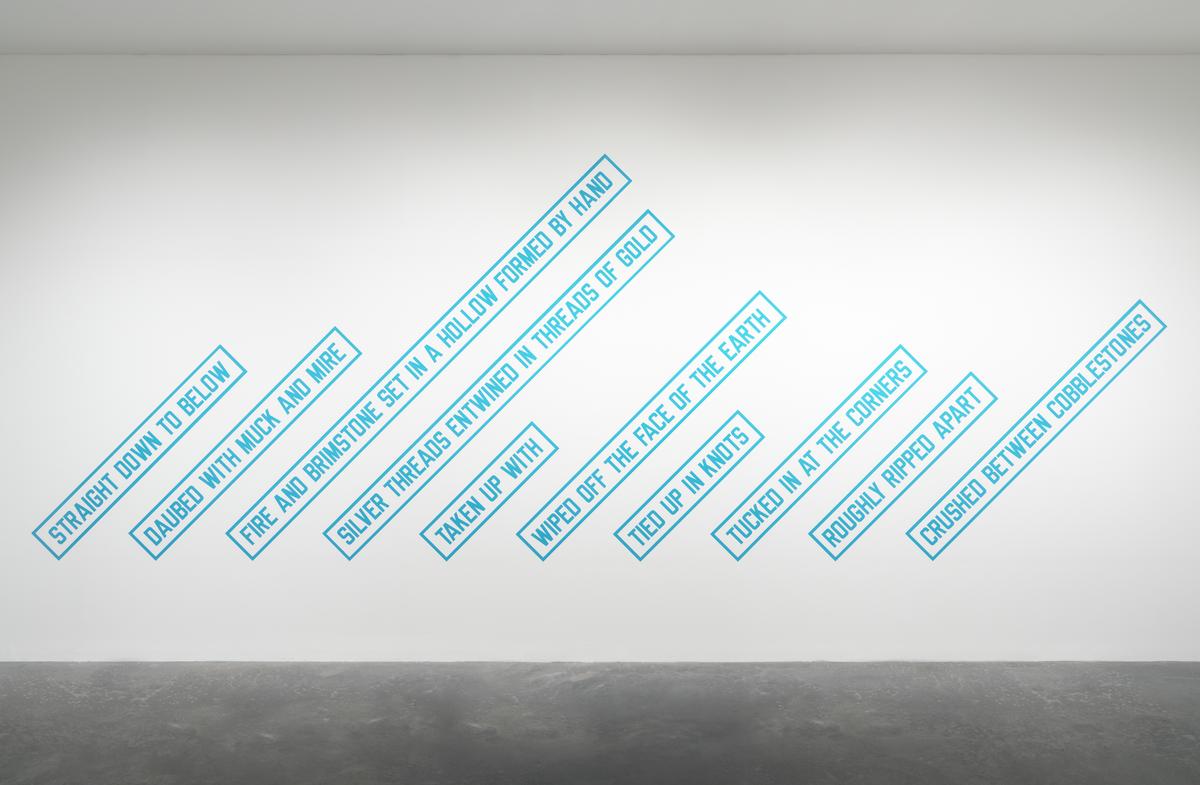

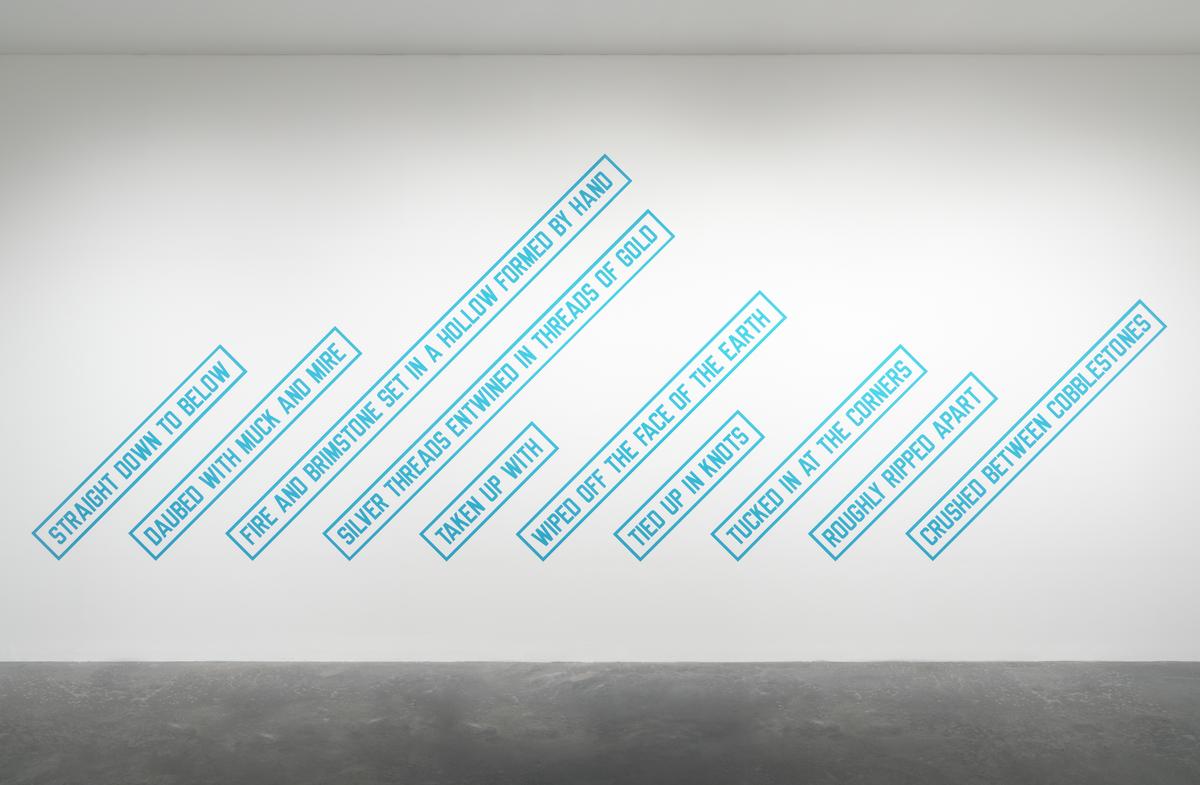
Sorry, no image available
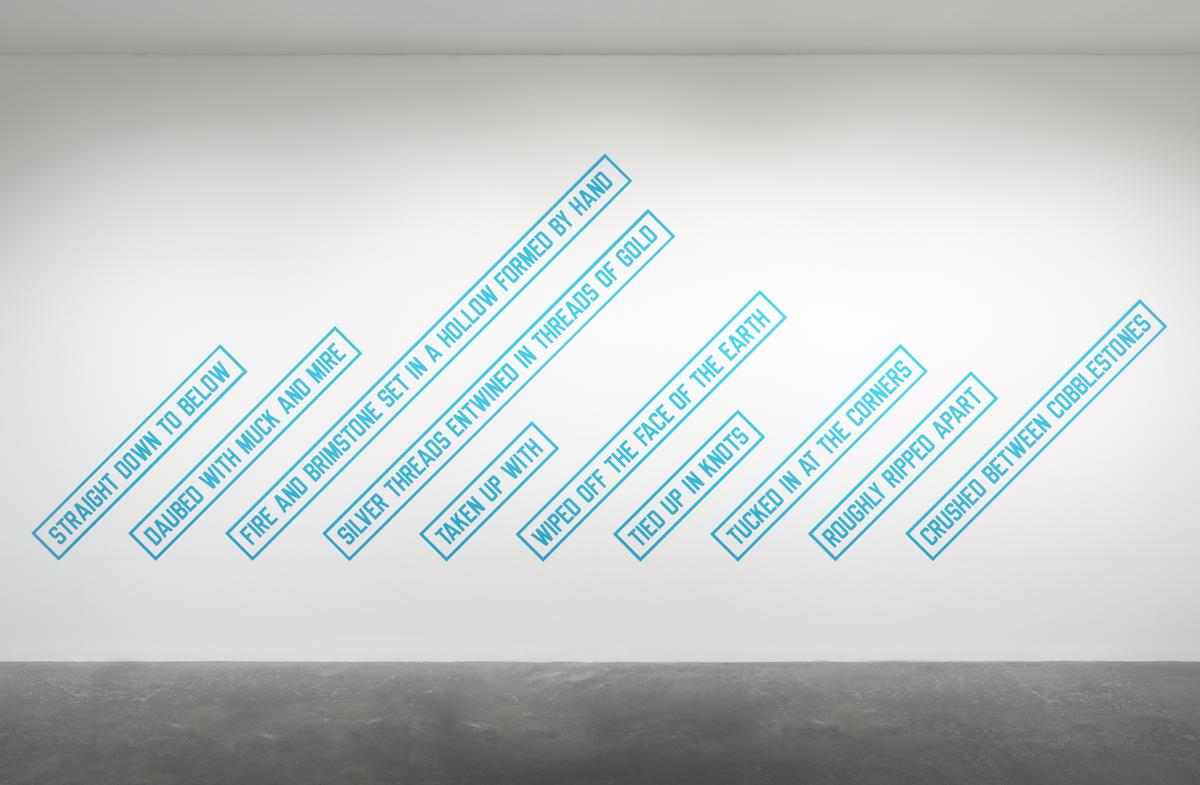
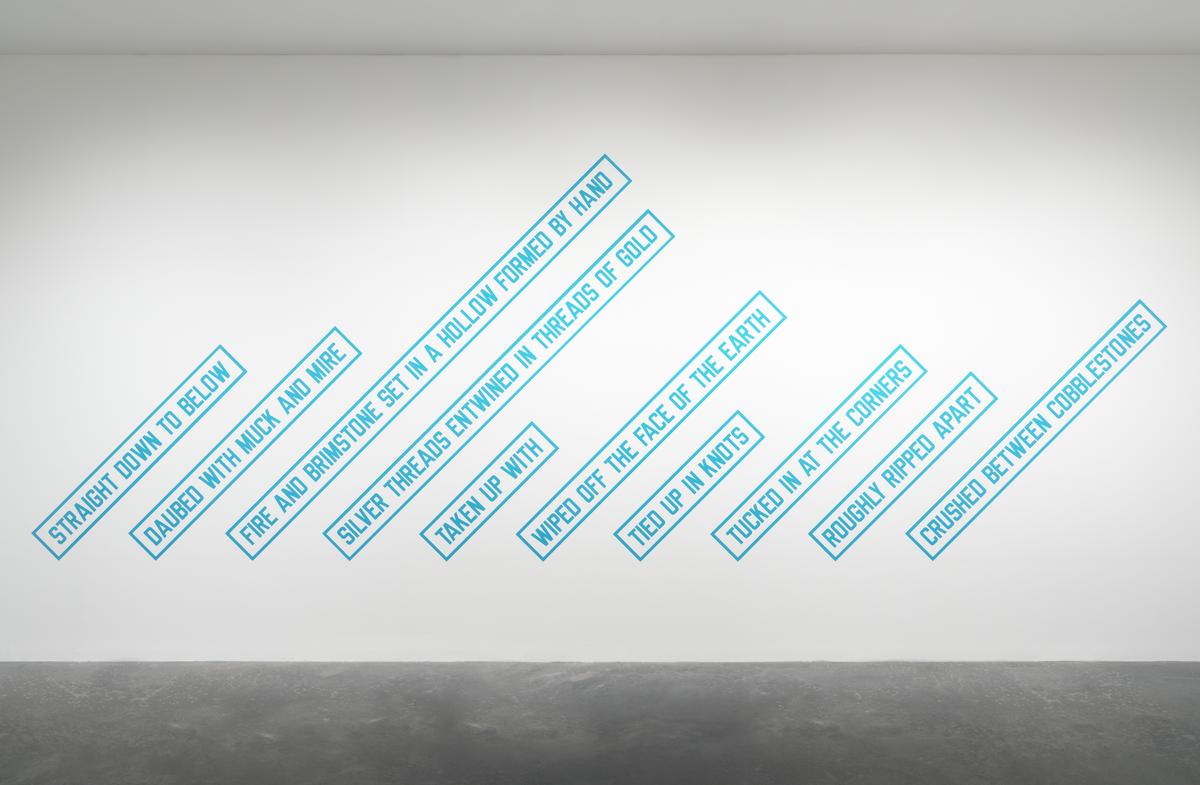
You've viewed 6/15 artworks
You've viewed 15/15 artworks

